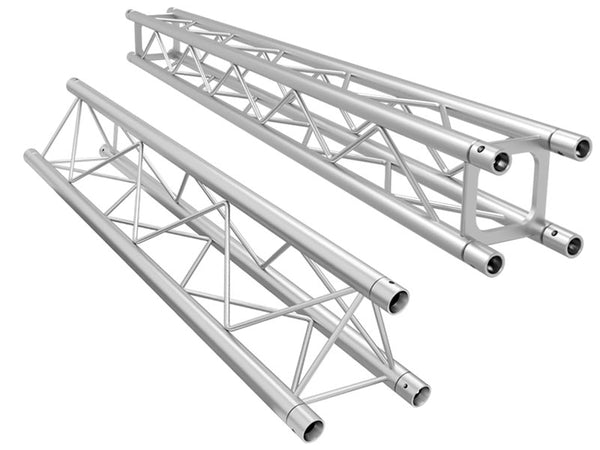
-
What is the desired Look – Square or Triangle?
Truss is one of those rare products that combines both form and function. It helps you apply a structure to a certain space and support other products but it also has certain look that is often referred to as “industrial”. Want to make the truss blend in and disappear? Use appearance products such as truss covers which come in standard colors such as white and black OR invest in a custom powder coat application in just about any color of the rainbow. The first question to answer is, do you want Square truss such as the F34 series or do you prefer the Triangle look of the F33 line? Keep in mind that while triangle truss can save a little money on your initial investment, making angles with Triangle truss requires a bit more planning as to where the “Apex” or single tube side will face up, down, left, or right.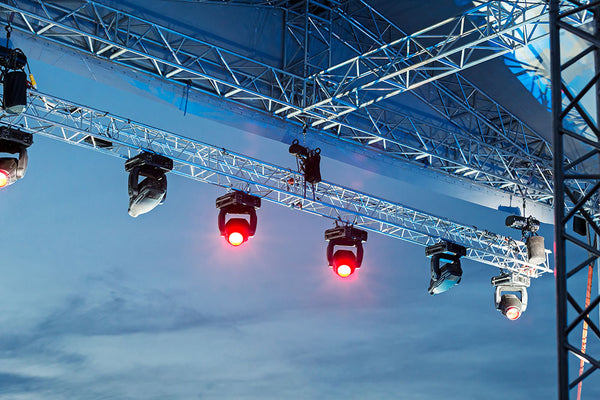
-
How will it be used and how much weight will go on it?
Are you planning on putting Lighting fixtures inside the truss for easy transport, then you would need 16” square/box truss – check out the F44 family of truss. Are you flying line array speakers from your truss and/or hanging large lighting fixtures from the bottom of the truss? Is your truss going to be used in a public setting where it goes over the heads of your guests? Use F34 series Square Box Truss or F33 Triangle Truss to ensure the safety of your gear and your guests. Are you hanging printed marketing materials or lightweight lighting fixtures? Then F24 series 9” square box truss could be the perfect fit. Do you just want a super small presentation of truss to reinforce the look of your retail space or home – check out the F14 square truss that is a tiny 4” diameter.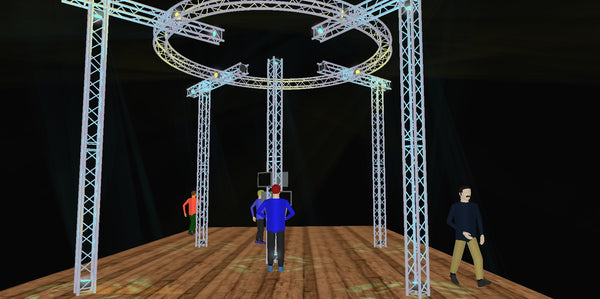
-
What are the size restrictions of your space?
Know your room / know your vehicle used to transport the truss. Take very accurate measurements of your room and remember that truss is manufactured in Metric sizes. PSSL can help you convert the numbers on your tape measure into metric sizing for truss. Remember that the width of the truss itself will take up some of that space as 4-inch, 9-inch, 12-inch, or 16-inch truss. If you are transporting or storing the truss, be sure to choose truss lengths that will fit in your vehicle. Sometimes it’s better to invest in qty 2 of a shorter length instead of 1 long length that is more difficult to transport, move, and store.
-
Will the Truss be combined with existing Truss?
While truss may look that same at first glance, it’s important to make sure that the truss you already own will fit and connect with the new truss that you are investing in. Since Truss is manufactured to very precise specifications, a very tiny millimeter difference in the connection points could make it so that your truss won’t connect. Be sure to take into consideration try to match the brand (such as Global Truss or Trusst), the shape and size (12” square truss connects to other 12” truss) and the connection point such as Spigot Truss (connects internally with couplers) or Closed End/Bolted Truss.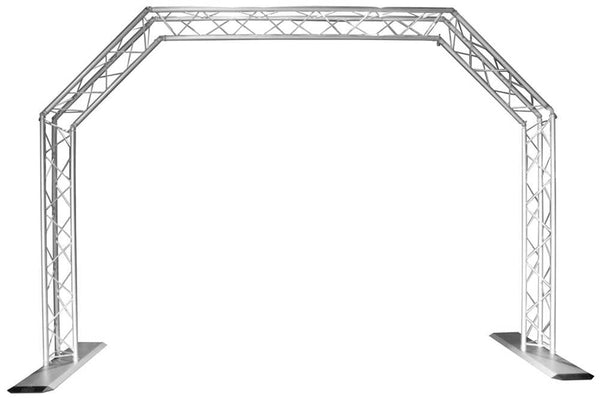
-
Is the Truss to be permanently installed or is it for mobile use?
Installing truss in a specific space requires good planning and detailed documentation. Success depends on getting just the right pieces to build your structure and having the product arrive at your location when you crew is ready to install. Plan as far in advance as possible in finalizing the gear list and always order it with more than enough time to plan for potential backorders and time in transit with the freight company that will deliver your truss. Are you setting this up and taking it down on a regular basis? You may have more flexibility on changing out a piece that falls into backorder but you’ll still need to give yourself enough time for the equipment to arrive at your address. Most larger truss orders must ship via Truck Freight which can add several more days to the standard UPS transit times. If your income or your reputation depends on this truss, plan ahead to avoid costly mistakes or delays.




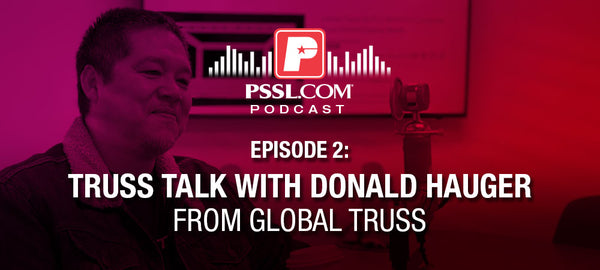 Check out the all-new
Check out the all-new 

